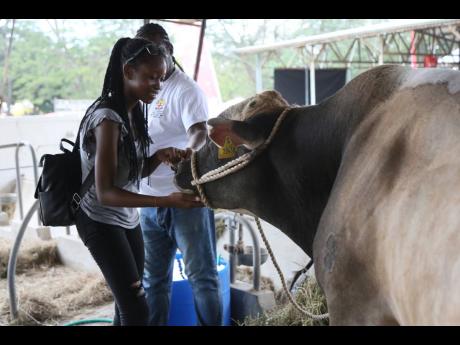Research stations set for upgrades
Following its $1.2-billion expenditure in rehabilitating the Bodles Agricultural Research Station in St Catherine, the Government is to invest in the resuscitation of its other research stations – Hounslow in St Elizabeth, Orange River in St Mary, and Montpelier in St James, in keeping with the commitment to advance agricultural research and development across Jamaica.
According to Minister of Agriculture, Fisheries and Mining Floyd Green, this is part of the ongoing effort to revitalise the industry through research and development, with investment to continue at Bodles.
“We have recognised that it is imperative to use new technical approaches to reduce genetic erosion of the Jamaica Hope breed, as well as identify cows of high genetic merit adapted to the local environment. To address this, the ministry is undertaking a project at focusing on the Jamaica Hope Nucleus Herd. The project’s overarching goal is to restore the herd’s functional capacity by implementing a genetic evaluation system. The objectives include increasing the frequency of desirable genes in cattle, and improving milk yield, fertility, and environmental adaptability,” he said during a press briefing at the ministry’s Hope Gardens head office recently.
NEW RESOURCES
According to Green, the investment at Bodles has equipped the research station with new resources to focus on agricultural research, including dairy farming, over the next three years.
Projects undertaken so far include:
•Investment in a state-of-the-art dairy milking parlour
•Refurbishment of infrastructure, including the installation of five 100-square-foot greenhouses
•Development of 155 acres of pasture
•Establishment of a catchment system and comprehensive water supply, and irrigation system for the entire compound
•Upgrading of laboratories, including post-harvest and bio-control labs, tissue culture facilities, animal nutrition labs, and a milk lab
•Construction of animal infrastructure, such as a goat house and cattle barn
•Enhancement of office space and staff facilities, including upgrades to eight offices
•Acquisition of two tractors and implements, and vehicles for improved operational efficiency
•Upgrade to security infrastructure to include fencing, cameras, and access cards
•A new herd management system with software that includes record, security, and tracking, and a brand new feed pelletiser valued at over $10 million.
“Additionally, we’re establishing fodder banks to ensure a steady supply of livestock feed. These banks address grain shortages caused by external factors like the conflict in Europe, and help small farmers to access affordable feed,” Green explained.


